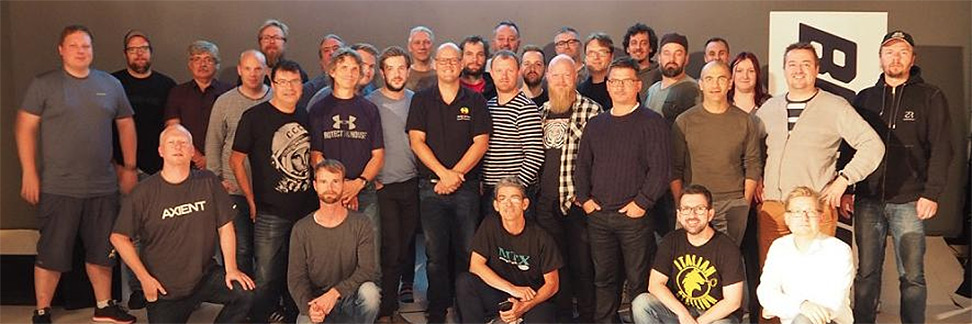The potential merits of using analyzers, for calibrating and voicing sound systems as well as loudspeakers, include (but not limited to):
- validation
- actionable data
- reconciliation with the—subjective—listening‑experience (eye‑to‑ear training1)
This article focuses on the importance of—actionable data—capable of providing guidance on chores such as aligning pass‑bands, i.e., crossovers, like a "full‑range" loudspeaker and a subwoofer. And whether to use time‑ or frequency‑domain information, or both.
actionable: capable of being acted on
- Merriam‑Webster Dictionary -
There is more than one way to skin a cat
Typical ways of time‑aligning top‑to‑sub include:
- In the frequency domain:
- throughout the crossover frequency span, match the loudspeakers' phase‑trace slopes and have them overlap.
- throughout the crossover frequency span, match the loudspeakers' phase‑trace slopes and have them overlap.
- In the time domain:
- align the loudspeakers' wavelet responses.
Where the goal—throughout the crossover frequency span—tends to be: constructive interference, i.e., summation, with minimal frequency response‑ripple. And it should not come as a surprise that, the optimal solution also results in the least transient‑distortion.
While either approach will ultimately achieve a desired outcome—and can be used in concert—each method's degree of ambiguity and subsequent "actionability" is subject to ongoing debate. That being said, all data points that lead to better or more expedient decision‑making are welcomed.
Wavelet Response Figure 1The wavelet‑response method is (re)gaining popularity which begs the question: what is a wavelet and its response?
Figure 1The wavelet‑response method is (re)gaining popularity which begs the question: what is a wavelet and its response?
Just like an impulse response is the response—as seen on an oscilloscope—of a "black‑box" system to an impulse. The wavelet response can be thought of as, the response to a wavelet as seen on an oscilloscope (Figure 1).
The difference being that, an impulse is a broadband signal and ill‑suited for aligning pass‑bands (explained in this video) whereas a wavelet is a band‑limited group of frequencies. The distinction is explained in‑depth in this article. Figure 2Wavelets are—finite—gated sinusoids, i.e., a pure tone with an amplitude‑envelope, whose bandwidth is inversely proportional to its duration. Where long wavelets (many cycles) are narrow‑banded whereas short wavelets (few cycles) are broadband (Figure 2).
Figure 2Wavelets are—finite—gated sinusoids, i.e., a pure tone with an amplitude‑envelope, whose bandwidth is inversely proportional to its duration. Where long wavelets (many cycles) are narrow‑banded whereas short wavelets (few cycles) are broadband (Figure 2).
A wavelet that: a) has a bandwidth equal or less than the crossover frequency span, and b) falls within the former. Contrary to the broadband impulse, can indeed be leveraged to successfully align pass‑bands in the time domain.
Optimal Solution Figure 3To the author's best knowledge, Figure 3 shows the optimal solution for two pass‑bands—designed to align—that cross over at 1 kHz.
Figure 3To the author's best knowledge, Figure 3 shows the optimal solution for two pass‑bands—designed to align—that cross over at 1 kHz.
Notice in Figure 3.5 that, the pass‑bands' phase traces have matching slopes and overlap. Subsequently, there are no signs of destructive interference and frequency response‑ripple throughout crossover.
Figure 3.3 confirms the outcome—in the time domain—by showing exemplary overlapping third‑octave‑wide wavelets at 1 kHz (same as crossover frequency). And even though the—broadband—impulse response‑peaks in Figure 3.2 are not aligned, the—combined—amplitude of both wavelets summed together (shown in red color) is twice as much, i.e., 6 dB gain.
The author is not aware of outcomes where the wavelets overlap optimally while the phase traces do not (or vice versa).
However, there are alternative, less‑optimal solutions, that pending one's vantage point, can easily be mistaken for contender solutions rather than pretender solutions. And invariably lead to frequency response‑ripple and excess time‑smearing. Figure 4For example, when either pass‑band is leading or lagging by half a cycle—of the crossover frequency—and polarity reversed (Figure 4).
Figure 4For example, when either pass‑band is leading or lagging by half a cycle—of the crossover frequency—and polarity reversed (Figure 4).
Contrary to the optimal alignment (middle row Figure 4), it is blatantly obvious that the phase traces' slopes do not—match and overlap—throughout crossover, except for the intersection at 1 kHz.
Whether or not these miss‑alignments are equally apparent from looking at the wavelet response, is for the readership to decide. More importantly, which depictions (time or frequency domain) of the same challenge, are more—actionable—and inform users which steps to take in order to resolve the situation.
The author feels that the wavelet response is a valid method to get one in the ballpark, but feels phase traces should have the final verdict. He can also be persuaded otherwise ;-)
Robust and Swift Data Acquisition
This article is not meant to be an exercise in good or bad. Instead, it promotes using all available data points to drive the decision‑making process. Taking into consideration (for a given method) its ability, and the means and time required, to capture reliable and repeatable—actionable—data. Free from contamination by uncorrelated energy such as ambient noise.
Free Calculator
The results in this article were created in a free Microsoft Excel workbook which can be downloaded below.
1 "Can I hear what I measure, and measure what I hear?"
